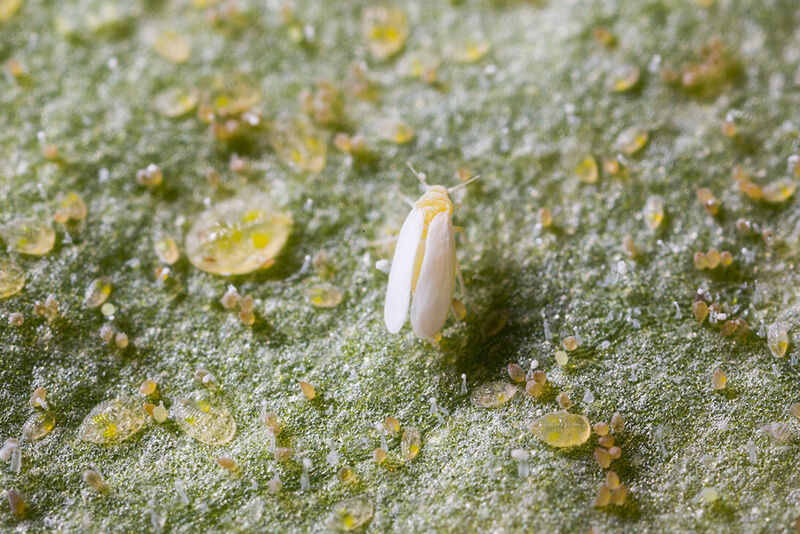Greenhouse whitefly and tobacco whitefly can inflict severe damage in vegetable, fruit, and ornamental crops. To minimize the impact, it’s important to be able to recognize damage as quickly as possible.
The larvae of greenhouse whitefly and tobacco whitefly need protein to grow, which they obtain by extracting sap from plants. The sap contains a variety of sugars; the excess is secreted as honeydew. In many cases, sooty mold will form on the honeydew, which growers want to avoid. It makes fruit unsaleable, and the sooty mold on the leaves will trigger reduced photosynthesis and evaporation, hindering growth.
Virus transmitter
Greenhouse and tobacco whitefly are also responsible for transmitting viruses. While the greenhouse whitefly transmits only a few viruses into vegetable and fruit crops, such as the tomato chlorosis virus, the greenhouse whitefly can transmit more than 25! ‘Tomato Yellow Leaf Curl Virus’ (TYLCV) is one of the most serious. The larvae and mature insects can pick up the virus before transmitting it in the adult stage.

Even more misery
The tobacco whitefly brings with it even more negatives. The larvae of the tobacco whitefly inject enzymes into the plant, causing damage. This can include irregular ripening in tomatoes and peppers, yellowing of flower stems in gerbera, and severe yellowing of the leaves of green beans. Other symptoms include chlorotic spots, falling fruit and/or leaves, irregular ripening, and misshapen fruit.
Consequently, since the mid-1980s, the tobacco whitefly has been considered a major problem in several world regions. Worse still, you only need a few whiteflies to cause damage to your vegetable, fruit, and ornamental crops.